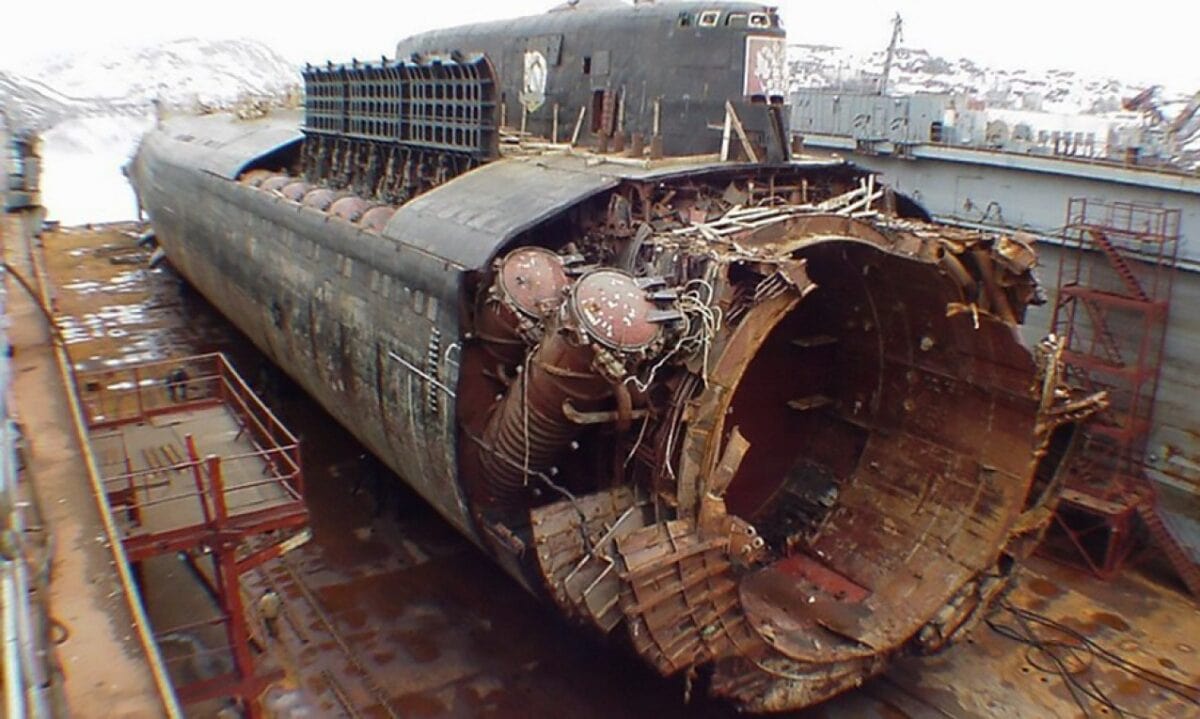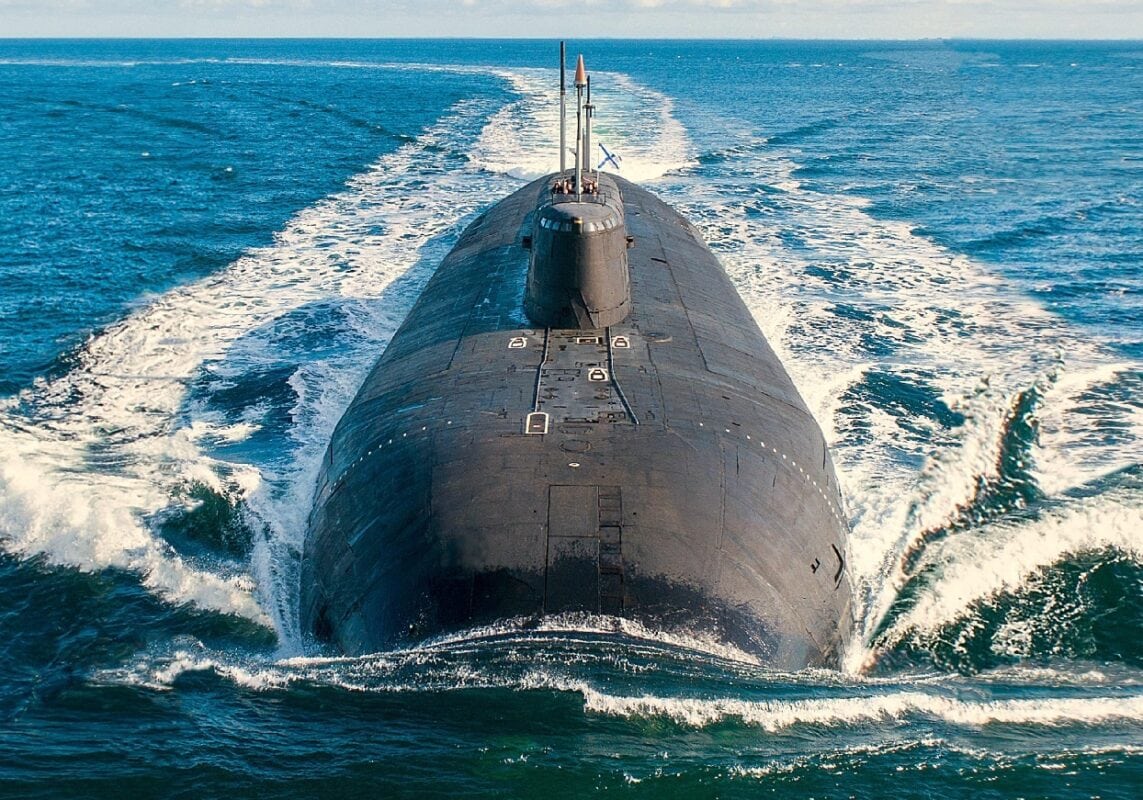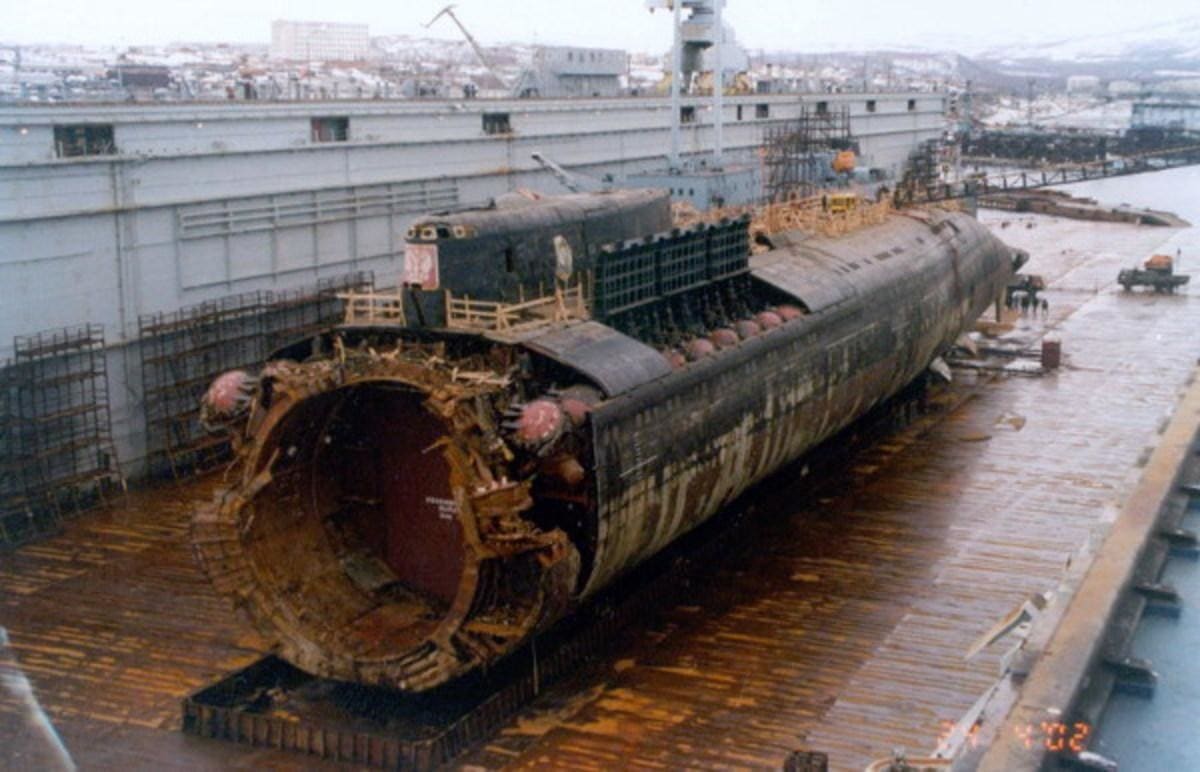Throughout the Cold War, there had been a number of tragic accidents involving Soviet submarines due to lax safety measures. However, since 2000, the Russian Navy has had its own share of submarine disasters. The first one was also the worst when in August 2000 the nuclear-powered Kursk sank in the Barents Sea due to an explosion in its torpedo room, which killed all 118 of its crew.
The Kursk‘s wreckage was recovered and the accident was ultimately traced to the Type-65-76A torpedo. Though the weapon is powerful enough to destroy an aircraft carrier with a single hit, the Soviet Union inexplicably designed the torpedo to run on hydrogen peroxide fuel, which is highly volatile and requires careful handling. The crew had not been adequately trained to handle those weapons.
The Kursk, which had been named after the July 1943 Battle of Kursk, the largest tank engagement in history, was one of eleven nuclear-powered Project 949A Antey (Oscar II) boats built at Seveorvinsk, and was one of the five assigned to the Russian Navy’s Northern Fleet. The other six were assigned to the Pacific Fleet, and while three more were planned, construction was eventually halted.
Disaster Strikes
In August 2000, Kursk was operating in the northern waters of the Barents Sea and was set to take part in a major exercise – the first since the dissolution of the Soviet Union nine years earlier. The exercise involved four attack submarines, the Northern Fleet flagship Pyotr Velikiy, and numerous smaller craft.
On August 12, at 11:28 local time, an explosion occurred as the crew was set to fire torpedoes. The officially accepted explanation was that the explosion was caused by a detonation of high-test peroxide (HTP), which was used as the torpedo’s propellant. The first explosion was followed by a second, equivalent to between 4.5 and 6.3 tonnes (five to seven tons), which launched massive pieces of debris back through the submarine.
The submarine quickly sank in the relatively shallow water to a depth of 350 feet (108 meters), and about 85 miles (135 km) from Severomorsk.
Offers to Help
As the news of the accident was reported, the British Royal Navy and the government in Norway offered to send rescue teams. However, the offers were declined by Russian leadership. The Russians had even claimed that all 118 crewmen on the submarine had been killed instantly, but it was later established that at least twenty-four of those men had survived for some time based on notes found on the body of an officer that was later recovered.
The Russians had quickly used the old Cold War Soviet-era playbook to attempt to pass blame on the accident, and that included suggesting the Kursk had collided with a NATO submarine that was spying on the exercise. Such claims were made again in the fall of 2021 by Retired Adm. Vyacheslav Popov, who was the commander of Russia’s Northern Fleet when the Kursk exploded.
Recovering the Kursk
The salvage operation began in September 2001, and it was a delicate one. There was a very real concern that the essential process of cutting away the bow of the Kursk using a tungsten-carbide studded cable before the boat could be lifted might trigger further explosions, as the tool could potentially ignite any pockets of volatile gas – including hydrogen – that remained trapped inside the wreck.
The salvage operation, which reportedly cost around $65 million, and required assistance from the Dutch marine salvage companies Smith International and Mammoet, was the largest salvage operation of its type ever accomplished. In addition to fears of the gases, there was also the risk of radiation from the reactor.
Only seven of the submarine’s twenty-four torpedoes were accounted for – the rest likely detonated during the accident.
The operation was eventually completed when a portion of the Kursk was towed to port in Severomorks, where the submarine was placed in a floating drydock for extensive forensic work to be carried out. Only after the bow section was destroyed on the sea floor – likely to prevent foreign countries accessing the debris – did Moscow finally admit the real reasons behind the accident – which was little comfort to the family of the 118 crewmen.
Key Kursk Facts
The outer hull of the Oscar II submarine was made of high-nickel, high-chrome content stainless steel that was .33 inches (8.5mm) thick. It had exceptionally good resistance to corrosion and a weak magnetic signature, which helped prevented detection by Magnetic Anomaly Detection (MAD) systems. There was also a 6.5 foot (2 meter) gap between the outer hull and the two-inch (50.8mm) steel inner hull.
The Oscar II boats are fitted with a seven-bladed propeller system, which made it far quieter than the Oscar I’s four-blade propeller. The subs were powered by two pressurized water-cooled reactors that powered two steam turbines and delivered 73,070 kw (98,000 ship) to two shafts.

Kursk Wreck from 2000.

Image of an Russian Oscar-class Submarine. Image Credit: Creative Commons.

Image: Creative Commons.
The Oscar II boats were also designed with at least ten separate compartments that can be sealed off from each other in the event of accidents. Those compartments were numbered in sequence from fore to aft. As with other Soviet-era submarine designs, the Oscar was equipped with a bridge to open to the elements o the top of the sail, as well as an enclosed bridge forward of the station in the sail for use in inclement weather.
Now a Senior Editor for 1945, Peter Suciu is a Michigan-based writer who has contributed to more than four dozen magazines, newspapers and websites. He regularly writes about military hardware, and is the author of several books on military headgear including A Gallery of Military Headdress, which is available on Amazon.com. Peter is also a Contributing Writer for Forbes.

